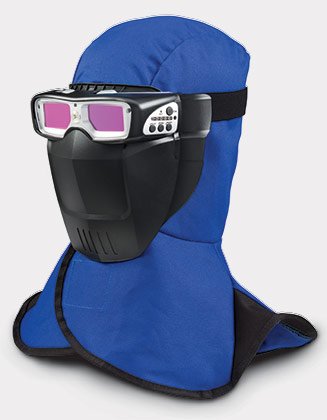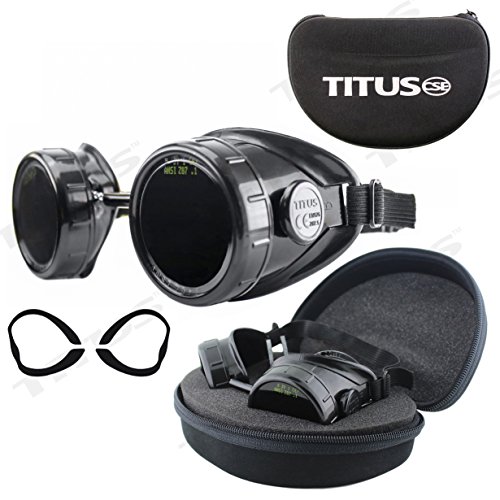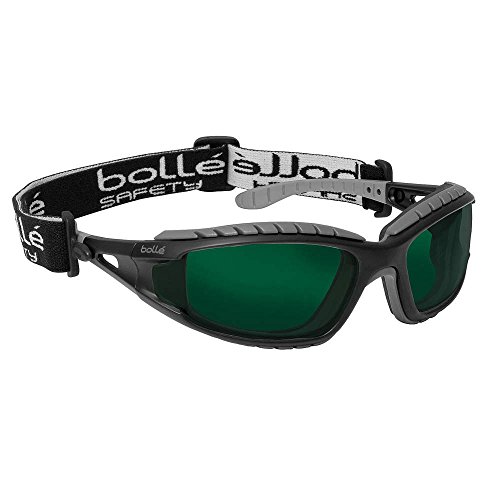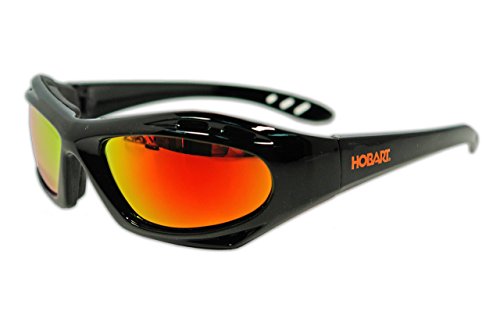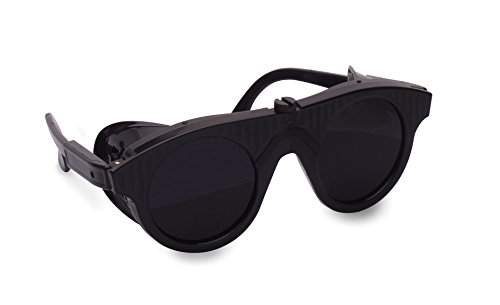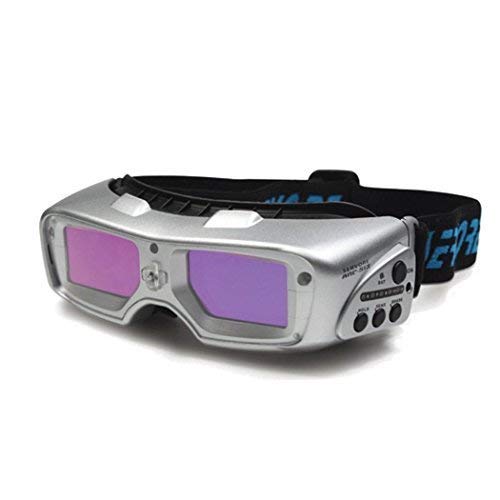7 Best Welding Safety Glasses 2025 – Guide, Top Picks & Reviews
Last Updated on
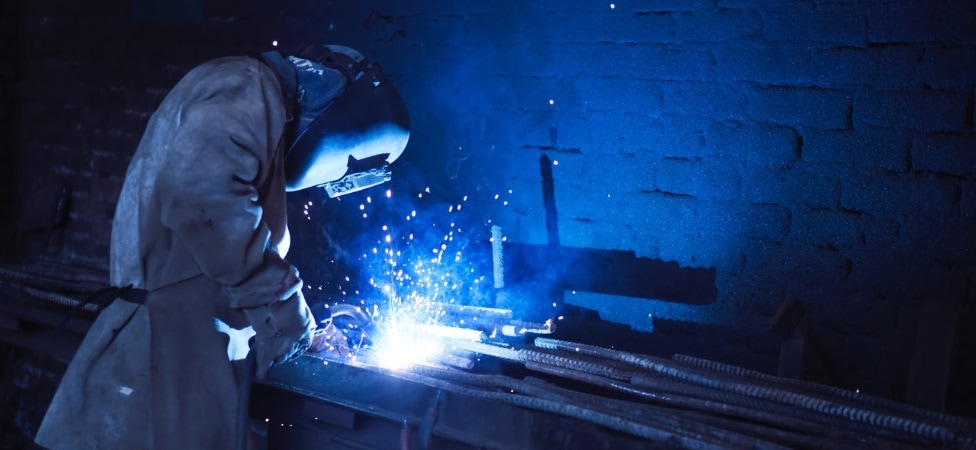
Welding can be dangerous if you are not properly protected. One of the pieces of equipment that you need is eye protection of some sort, but what kind is best? We have reviewed quite a few and came up with a list of seven that we think will meet your needs.
Breakdown of our Favorites in 2025
| Image | Product | Details | ||
|---|---|---|---|---|
| Best Overall |
 |
Miller Adjustable Safety Goggles |
|
CHECK PRICE |
| Best Value |
 |
Miller Safety Glasses |
|
CHECK PRICE |
 |
TITUS Safety Goggles |
|
CHECK PRICE | |
 |
Bolle Safety Glasses |
|
CHECK PRICE | |
 |
Hobart Safety Glasses |
|
CHECK PRICE |
The 7 Best Safety Glasses for Welding
1. Miller Adjustable Welding Safety Goggles – Best Overall
Shade: #5, #7, #9, #11, #13
The Miller Electric Adjustable Welding Goggles have glass lenses that allow you to adjust the sensitivity to any one of five shades. They offer a 3 ½-inch viewing area that fits tightly to your face to fully protect your eyes from flash burn. They also have a replaceable silicon face covering and flame-retardant head covering to protect your head and neck in areas that a normal welding helmet is too big and bulky to fit.
These goggles are compact enough that they won’t fit over prescription glasses. They also fog up quickly since there are no vents to allow air flow.
- Glass
- Adjustable sensitivity – five shades
- 3 ½-inch viewing area
- Eye covering fits tightly to face
- Replaceable silicon face covering
- Flame-retardant head covering
- Fog up
- Won’t fit over prescription glasses
2. Miller Welding Safety Glasses – Best Value
Shade: #5
The Miller Electric Shade #5 Welding Safety Glasses have polycarbonate lenses in a wraparound style frame. They have polarized lenses that offer UV protection to guard your eyes from multiple kinds of damage. They also have rubberized ear pads for your comfort.
The frames of these safety glasses are made of poor quality plastic, so it won’t take a whole lot for them to break. The lenses also scratch easily and are not dark enough to block the brightness that occurs while welding. You will begin to see spots if you use them too long.
- Polycarbonate lenses
- Wraparound frame style
- Polarized lenses
- UV protection
- Rubber ear pads
- Frames made of cheap plastic
- Not dark enough
- Scratch easily
3. TITUS Welding Safety Goggles
Shades: #9, #11, #14
The TITUS Welding Safety Goggles have different lenses that each offer their own level of protection. They are easy to change. All you have to do is unscrew the ring, replace the lens, and replace the ring.
These goggles have an adjustable strap to secure them to your head. You can also adjust the bridge of the nose. That plus the added padding around the lenses means that you can wear them comfortably for more extended periods of time.
We found that even though the bridge of the nose is adjustable, the hard plastic it’s made of is still uncomfortable on your nose. The extra padding doesn’t help too much either. There are also tiny slots where the nose bridge connects to the eyepieces that allow light to get into the goggles, and even the darkest lenses aren’t dark enough. These two things together allow more light to get to your eyes than you may like. They do the job, just not as efficiently as some.
- Multiple shades
- Lenses easily changed
- Adjustable comfort
- Added lens padding
- Hard plastic is uncomfortable on your nose
- Slots that allow light in
- Not dark enough
4. Bolle Safety Welding Glasses
Shade 5.0
The Bolle Safety Shade 5.0 Welding Safety Glasses have polycarbonate, scratch-resistant lenses that offer UV protection. They don’t form to your face, which leaves the sides open for light to get through. They have an adjustable breakaway retainer cord that could be a good thing, but we found that even the slightest touch breaks the connection and leaves your eyes vulnerable.
- Polycarbonate lenses
- UV protection
- Scratch-resistant
- No side protection
- Retainer cord breaks easily
5. Hobart Safety Glasses for Welding

Shade: 5
The Hobart 770726 Shade 5 Safety Glasses are made with scratch-resistant, shatterproof, polycarbonate shade five lenses.
We found that these goggles run large, as if they are made only for men. They aren’t very dark, but if you have a small head, they let in even more light. They also fog up quickly with no ventilation.
- Shatterproof polycarbonate shade #5 lenses
- Scratch-resistant
- Run large
- Not dark enough
- Fog up
6. NOVEL Welder’s Protective Glasses
Shade: #10
The NOVEL Safety Glasses Protective Glasses have radiation-resistant lenses that are made of shade number ten green lens glass. They are really dark, so you really can’t see much until you actually start welding and have the extra light. You do get some light from the top and the bottom of the glasses, since they don’t seal to your face all the way around.
They are made out of inferior quality plastic that takes almost no effort to break. The lenses also scratch quite easily, but for the price, you can afford to replace them often.
- Shade #10 green lens glass
- Radiation resistance
- So dark that you can’t see much until you start welding
- Made of poor quality plastic
- Scratch easily
- Open on top and bottom
7. Servore Auto-Shade Darkening Welding Goggle
From Shade: #5 to #13
The Servore Auto Shade Darkening Welding Goggle has heat-resistant lenses, and the shade can be adjusted between five choices, from #5 to #13.
These goggles have auto adjusting to darken, but they flicker back and forth and don’t offer consistent darkness. It is difficult to figure out how to use them, since the instructions are not written in English.
The mask fits very tightly around your head so that it is almost uncomfortable. Between the close fit and no vents, these goggles fog up terribly. You can get the job done if you have the patience to clear them every two minutes.
- Adjustable shade level
- Heat-resistant
- Instructions not in English
- Don’t keep consistent darkness
- Mask too tight
- Fog up
Buyer’s Guide: How to Choose the Best Welding Safety Glasses
Five musts for safety glasses
1. They must have the ability to safely provide protection to the eyes from the front and the sides.
2. They must fit the user correctly and be comfortable to wear.
3. They must allow for movement without restricting the view.
4. They must be durable and clean without smearing.
5. They must not restrict or interfere with the work being done.
Types of Eye Protection
1. Safety glasses:
These glasses have harder-than-ordinary lenses and often have some side shielding.
2. Safety goggles:
Goggles seal to your face for all-around protection. They may also fit over prescription eyeglasses.
Lens Material
1. Polycarbonate:
Polycarbonate glasses are lightweight and protect against UV rays, but aren’t as clear as other materials.
2. NXT Polyurethane (Trivex):
Trivex is super-lightweight and has top-notch visibility, but is expensive.
3. Acrylic:
Acrylic is lighter than glass, scratch-resistant, and less expensive, but it doesn’t offer very clear sight and isn’t very durable.
4. Optical glass:
Glass doesn’t distort what you’re looking at and can be protected against scratches, but these glasses are heavy and don’t do very well with any direct impact.
Types of Safety Goggles:
Direct vent:
Direct vent goggles have multiple slits in them to allow air to move behind the lenses and prevent fogging. These are best used for impact protection.
Indirect vent:
Indirect vent goggles also have multiple slits in them, but those slits are covered, allowing them to fog more frequently.
Non-vented:
Non-vented goggles are just that. They don’t have any slits, but are one solid piece. They offer the best protection from impact and splashes, but they fog up quickly.
Conclusion
Now that we have discussed the different types of safety glasses and how they are made, here are the seven that we chose for you out of all those we reviewed.
1. Miller Electric Adjustable Welding Goggles (Shade: #5, #7, #9, #11 , #13) – Top Pick
2. Miller Electric Shade #5 Welding Safety Glasses – Best for the Money
3. TITUS Welding Safety Goggles (Shades: #9, #11, #14)
4. Bolle Safety Shade 5.0 Welding Safety Glasses
5. Hobart 770726 Shade 5 Safety Glasses
6. NOVEL Safety Glasses Protective Glasses (Shade #10)
7. Servore Auto Shade Darkening Welding Goggle (From Shade #5 to #13)
Hopefully, you feel confident that you can now choose the best welding safety glasses for your specific needs.
You can also read our guide on the must-have safety gear when welding here.




